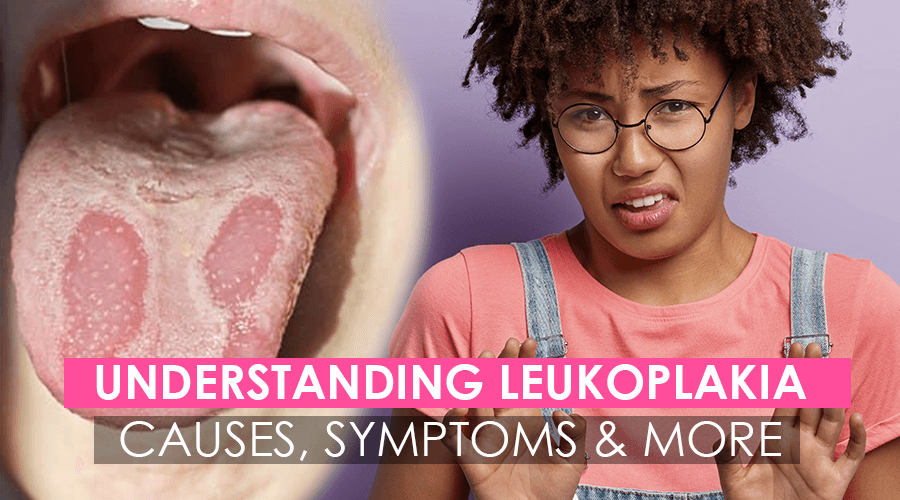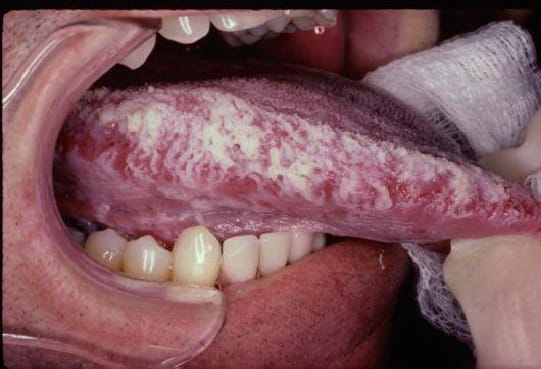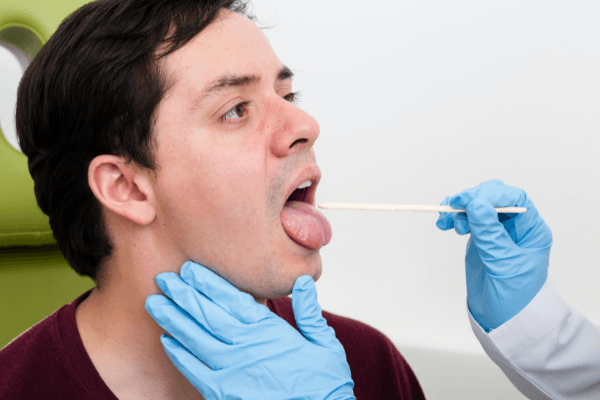If you smoke or consume alcohol regularly, you might want to stick around and learn more about leukoplakia and why you could be at risk of developing it.
This condition manifests as a white or a gray area that usually appears on your tongue, inside your cheek, or on the floor of your mouth (and in some instances in the female genital area).
It’s the mouth’s response to long-term chronic irritation of the mucous membranes. In the same exact way that your skin covers your body, mucous membranes protect the internal parts of your body that get air exposure. These membranes also have glands that help them stay moist at all times.
The sores can have various appearances, but most of the time, they are white or gray, with thick, elevated borders and a rough surface. Patches of leukoplakia can appear at any age, but it is more frequent in older people.
What Causes This Condition?
Regrettably, the actual etiology of this illness has yet to be discovered. Researchers are still trying to figure out what causes it to develop in the first place. However, chronic irritation, like the one that originates from smoke, appears to have a substantial role in most patients with leukoplakia.
A variety of factors can cause leukoplakia. Tobacco smoking or chewing is the most prevalent factor in the progression of the disease.
Leukoplakia is six times as likely to develop in smokers. Still, your chance of getting leukoplakia increases by any damage or chronic irritation to the mouth’s tissues.
Other factors that may contribute to this condition’s growth and progression include:
- Bad oral hygiene
- HPV (human papillomavirus)
- Frequent cheek or tongue biting
- Using alcohol excessively
- Rough teeth
- Dentures that are ill-fitting and rub against your cheeks or gums
Types of Leukoplakia
Commonly, you can find two types:
1.- Homogeneous leukoplakia is a primarily white lesion with a smooth, wrinkled, or corrugated surface with a consistent texture throughout. It may exhibit tiny fissures and has a smooth, wrinkled, or corrugated surface with a consistent texture throughout.
2.- Non-homogeneous leukoplakia, on the other hand, A primarily white or white-and-red lesion that is irregularly flat, nodular, or verrucous. This type of leukoplakia is seven times more likely than homogenous leukoplakia to develop into cancer.
What Is Oral Hairy Leukoplakia?
This condition comes from infections of the Epstein-Barr virus (one of the most common human viruses). People with weakened immune systems have more tendency to develop oral hairy leukoplakia. They look like white fuzzy patches (hence the name) that show up on your tongue or other areas of your mouth.
People with HIV are more likely to develop oral hairy leukoplakia. It could be a sign that your HIV has progressed. It’s an indicator of a weakened immune system.
Also, even after you removed the leukoplakia patches, there is still a chance of developing oral cancer in the future, so it is best to keep an eye on your mouth’s wellbeing until your dentist gives you the green light.
Symptoms and Signs of Leukoplakia
The signs of this condition begin with one or more white patches showing on the tongue’s surface, underneath your tongue, or on the insides of your cheeks.
The area could have grown slowly over weeks or months, becoming thick, somewhat elevated, and eventually hardened and harsh. It usually is painless, but it can be irritated by contact, heat, spicy meals, or other factors.
Leukoplakia patches can appear in the following ways:
- Thick, white, or gray, and you can’t wash them away.
- Its surface seems hard and elevated.
- The skin has thickened or toughened.
- When your mouth patches come into contact with acidic or spicy foods, they become painful.
How to Treat Leukoplakia?
The majority of patches can heal on their own and do not require treatment. It’s critical to stay away from any triggers that may have contributed to your leukoplakia.
Here is a list of what your health professional might advise you to change:
- Stay away from tobacco and alcohol.
- Try to follow a diet that is high in fruits and vegetables.
- Retinoids (vitamin A-based therapies for acne and psoriasis) can help diminish lesions when you take them orally, although there are some adverse effects.
Your dentist could help if your condition is due to irritation from a tooth problem. On the other hand, if you get a positive oral cancer biopsy, you should get help to remove the patch right away. This is crucial in the prevention of cancer cells spreading.
You can also opt for laser therapy, a scalpel, or a freezing process to treat leukoplakia.
Since the white spots of leukoplakia do not produce very evident symptoms, it’s critical to get early treatment when the lesion is minor. Regular checks are essential as well, as is routinely evaluating your mouth for abnormalities.
To prevent the development of this oral condition:
- Try keeping your mouth healthy by caring for your teeth and gums.
- Attend regular dental check-ups with your dentist.
- If you use dentures, make sure they don’t hurt you in any way and fit correctly.
- Try to keep up with a balanced diet that includes lots of fruit and vegetables.
Seek Professional Treatment for Effective Results
You may wonder how to treat leukoplakia naturally or how long you can go without having it looked at. However, getting help from a professional is always for the best.
Remember that preventing is always vital in stopping the condition from getting worse and affecting you further, both physically and financially.
Contact Dr. Serena Kurt, an experienced and compassionate dentist in Clairemont who can assist you in diagnosing leukoplakia and giving you the best route of its treatment according to your needs.
Leukoplakia might not be painful or uncomfortable initially, but most of the time, it’s an indicator of a more significant issue. If you happen to recognize symptoms of this condition in your mouth, don’t hesitate to contact us right away.






Leave a Reply